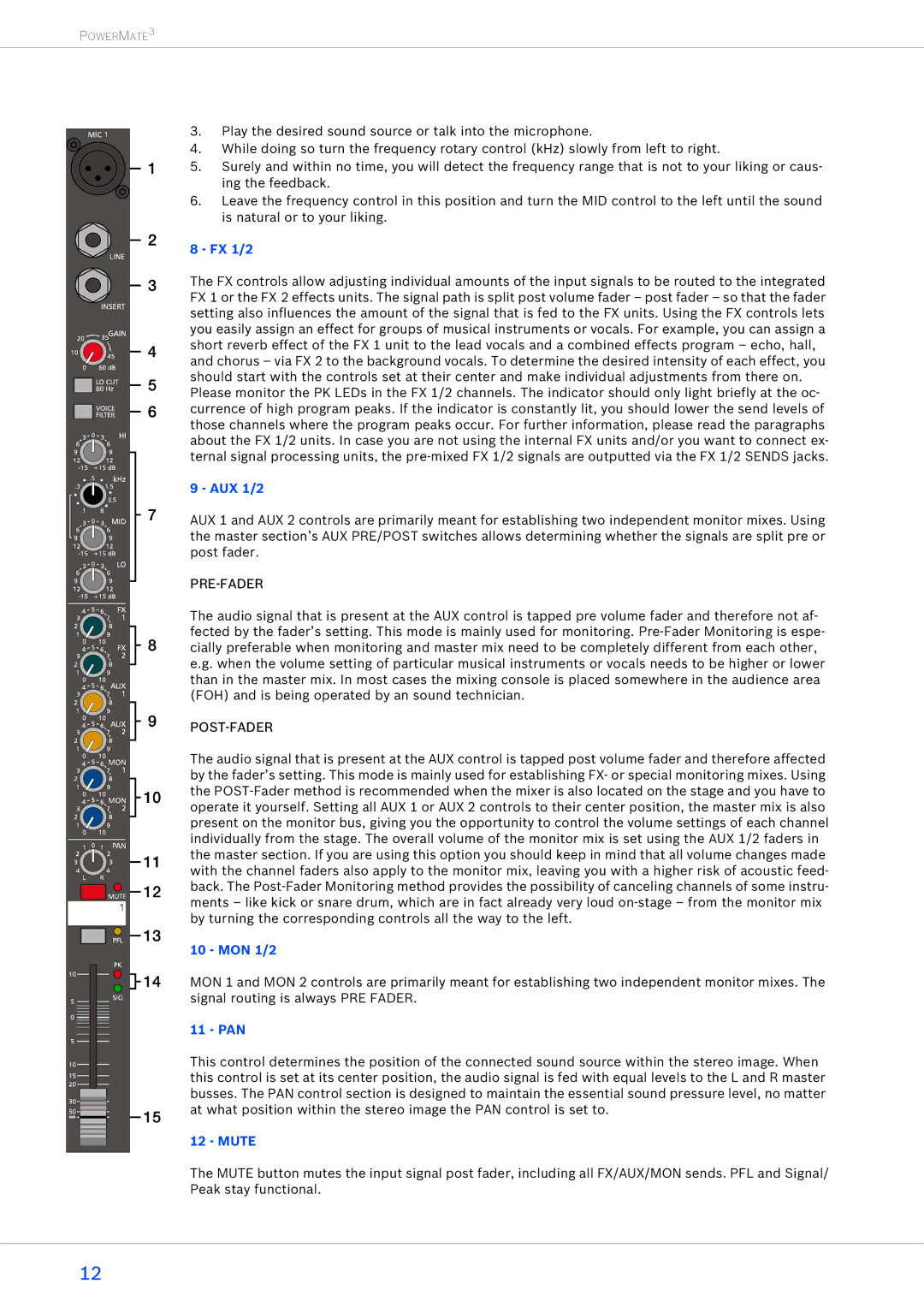
POWERMATE3
3.Play the desired sound source or talk into the microphone.
4.While doing so turn the frequency rotary control (kHz) slowly from left to right.
5.Surely and within no time, you will detect the frequency range that is not to your liking or caus- ing the feedback.
6.Leave the frequency control in this position and turn the MID control to the left until the sound is natural or to your liking.
8 - FX 1/2
The FX controls allow adjusting individual amounts of the input signals to be routed to the integrated FX 1 or the FX 2 effects units. The signal path is split post volume fader – post fader – so that the fader setting also influences the amount of the signal that is fed to the FX units. Using the FX controls lets you easily assign an effect for groups of musical instruments or vocals. For example, you can assign a short reverb effect of the FX 1 unit to the lead vocals and a combined effects program – echo, hall, and chorus – via FX 2 to the background vocals. To determine the desired intensity of each effect, you should start with the controls set at their center and make individual adjustments from there on. Please monitor the PK LEDs in the FX 1/2 channels. The indicator should only light briefly at the oc- currence of high program peaks. If the indicator is constantly lit, you should lower the send levels of those channels where the program peaks occur. For further information, please read the paragraphs about the FX 1/2 units. In case you are not using the internal FX units and/or you want to connect ex- ternal signal processing units, the
9 - AUX 1/2
AUX 1 and AUX 2 controls are primarily meant for establishing two independent monitor mixes. Using the master section’s AUX PRE/POST switches allows determining whether the signals are split pre or post fader.
PRE-FADER
The audio signal that is present at the AUX control is tapped pre volume fader and therefore not af- fected by the fader’s setting. This mode is mainly used for monitoring.
POST-FADER
The audio signal that is present at the AUX control is tapped post volume fader and therefore affected by the fader’s setting. This mode is mainly used for establishing FX- or special monitoring mixes. Using the
10 - MON 1/2
MON 1 and MON 2 controls are primarily meant for establishing two independent monitor mixes. The signal routing is always PRE FADER.
11 - PAN
This control determines the position of the connected sound source within the stereo image. When this control is set at its center position, the audio signal is fed with equal levels to the L and R master busses. The PAN control section is designed to maintain the essential sound pressure level, no matter at what position within the stereo image the PAN control is set to.
12 - MUTE
The MUTE button mutes the input signal post fader, including all FX/AUX/MON sends. PFL and Signal/ Peak stay functional.
12
